Google likes to mix it up. From constant algorithm changes to its RankBrain AI, there is always news out of Mountain View.
Another thing that has changed a lot over time is the layout of the SERPs or Search Engine Result Pages. As of late, you might have noticed that the search field now has round edges and that it sticks to the top edge of the screen when scrolling.

Some people have also apparently been part of a group on which Google A/B tested more design changes.
Yet, not only the way things look has changed, new layout elements and information have also found their way into the results. In this post, we will show you what these changes are, how they affect your ranking efforts, and what you can do to ensure your rankings in the future.
How Google’s Layout has Changed
When thinking of a typical search page, you are probably picturing this: paid listings, followed by organic search results, right?
That’s fundamentally what Google has delivered for years. However, the way the search engine shows these results has changed over time and there are some new additions to the SERPs. Together, this results in quite a different experience.
Thanks to Orbit Media (who provided below screenshots of SERPs from different times), we can take a trip back and see what exactly has changed.
Organic Listings Have Moved Way Down
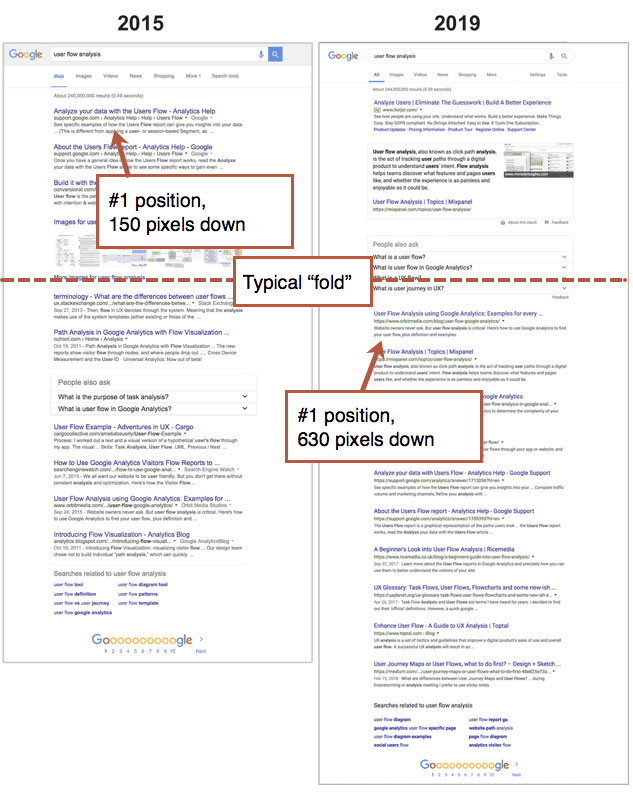
One of the things that stands out when you compare the current Google search results to their older design is that the organic results have been pushed down the page – a lot.
Besides the paid ads, you now typically have several other elements in front. Here is a list of new layout features Google has introduced over the years:
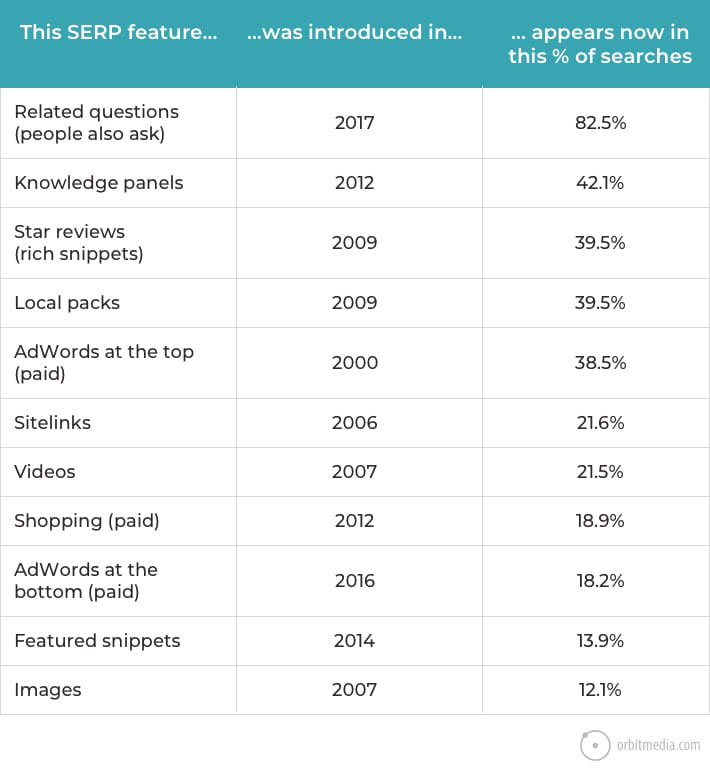
As a consequence, users have to scroll much further to reach the part where you and I hope to find our content. Makes you a bit uneasy, doesn’t it?
Featured Snippets and Related Questions Minimize Clicks
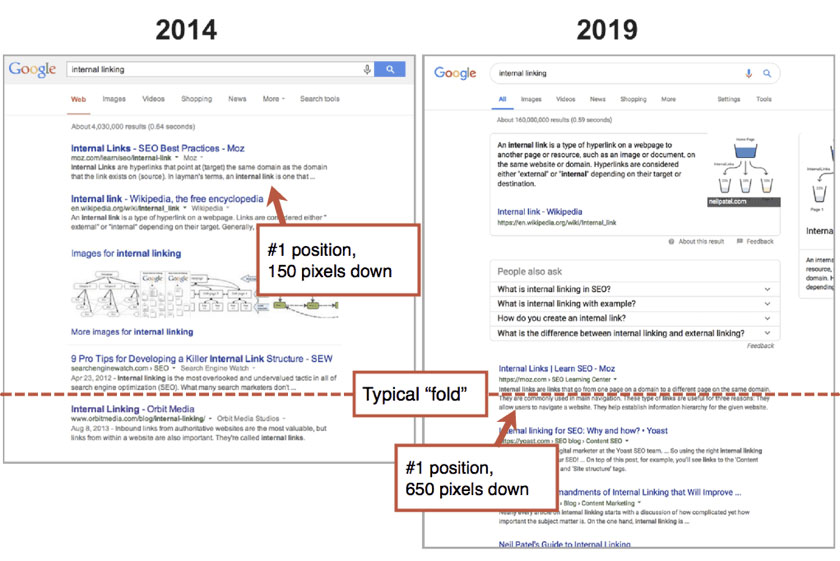
In addition, when users search for something, they now often find answers to their query directly inside the search page. In addition, there might be related questions that also come with their answers inside the page.
This is directly related to Google increasingly aiming to satisfy search intent. It’s very convenient for users as they don’t have to make one more click to find the information they are looking for. However, if you are a website owner, that’s also a negative development since it robs you of traffic that would normally access your pages for the answer.
In fact, the number of these “no-click” queries has been steadily increasing, especially on mobile.
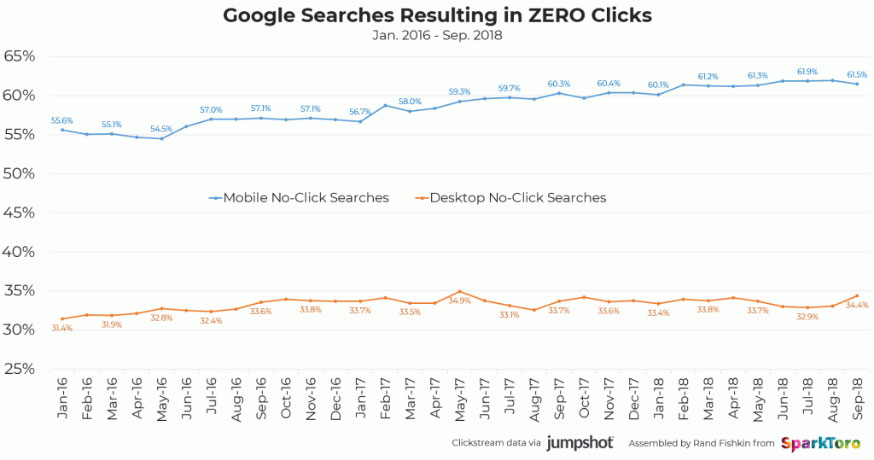
In short, it’s harder for users to get to the organic results and Google is also eliminating the need to do so. Scared yet?
Ads Stand Out Less
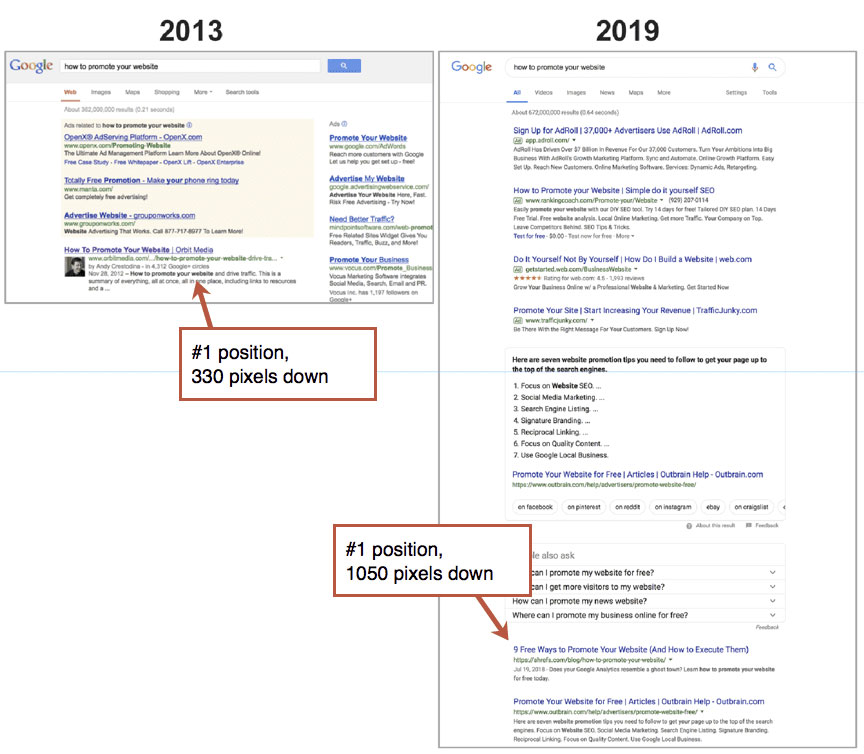
In earlier versions of Google’s pages, ads stood out more clearly from the rest of the search results. By now, they almost look like organic search results, save for the small “Ad” icon next to the link. It’s even more pronounced on mobile as you will see below.
Since Google earns money with people clicking on the advertisement, this development makes sense from a business perspective. It may also be a sign of their shifting priorities.
However, in addition, the search engine removed the ads on the right a few years back.
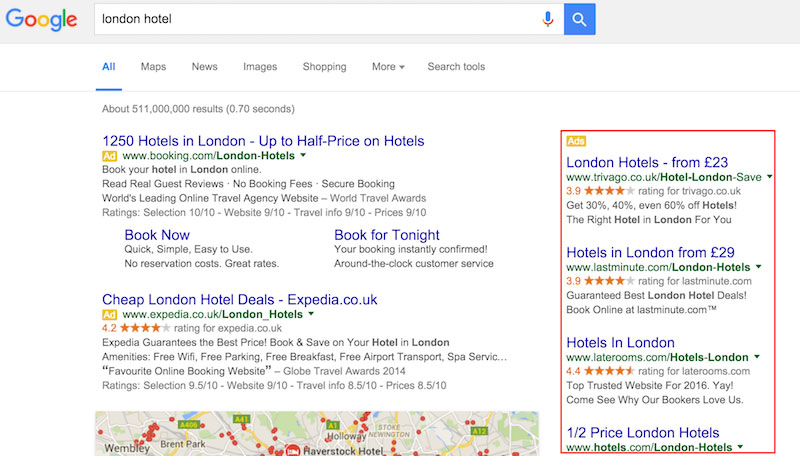
This was because they found that users mostly ignored them anyway. In addition, the ads also didn’t show up in mobile search due to lack of space and Google is increasingly putting mobile-first.
So, while ads are more integrated, there are also less of them, shifting the focus further to those few that remain.
There Are Fewer Organic Listings
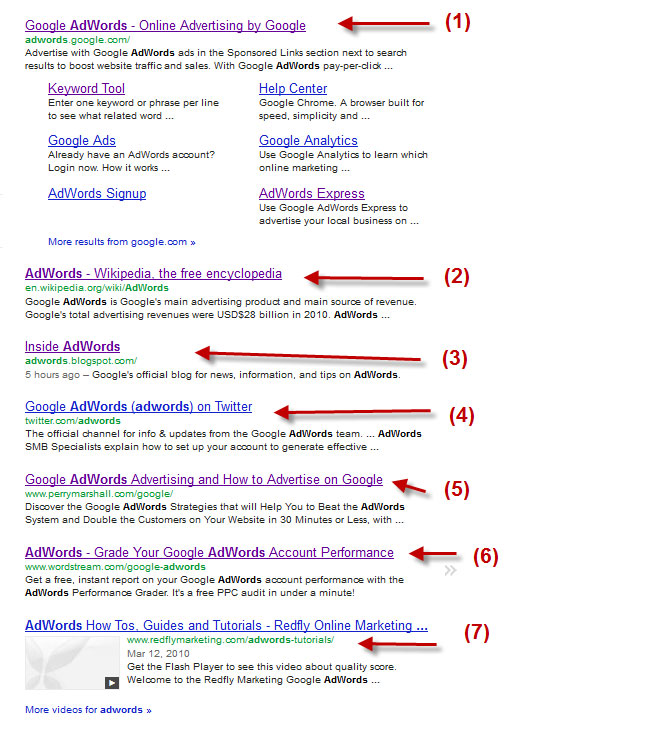
The magic number for organic search results used to be around ten. It was something we could rely on, like taxes or the unconditional love of dogs.
Breaking into the top-ten results used to be one of the most common goals for SEOs everywhere. This is because we all know that being anywhere else than the first page of Google is negligible in terms of traffic.
Yet, by now, almost 20 percent of result pages have fewer entries than that, especially navigational/branded keywords.
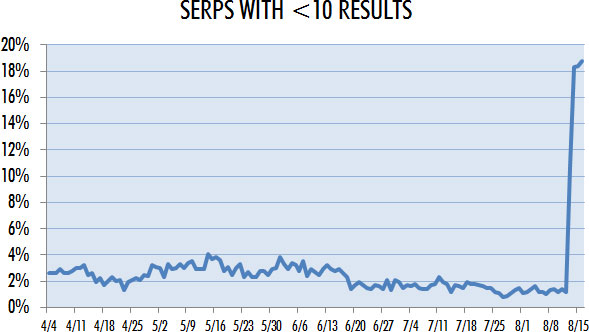
That means, for a fifth of all search results the competition for the first page is even more fierce. Man, this is starting to sound worse and worse.
Mobile Search Has Changes as Well
Mobile search has also seen its changes. Besides basically becoming an infinite scroll experience (thanks to the More results button), in 2019 Google made some UI changes that focus the results stronger on publishers.
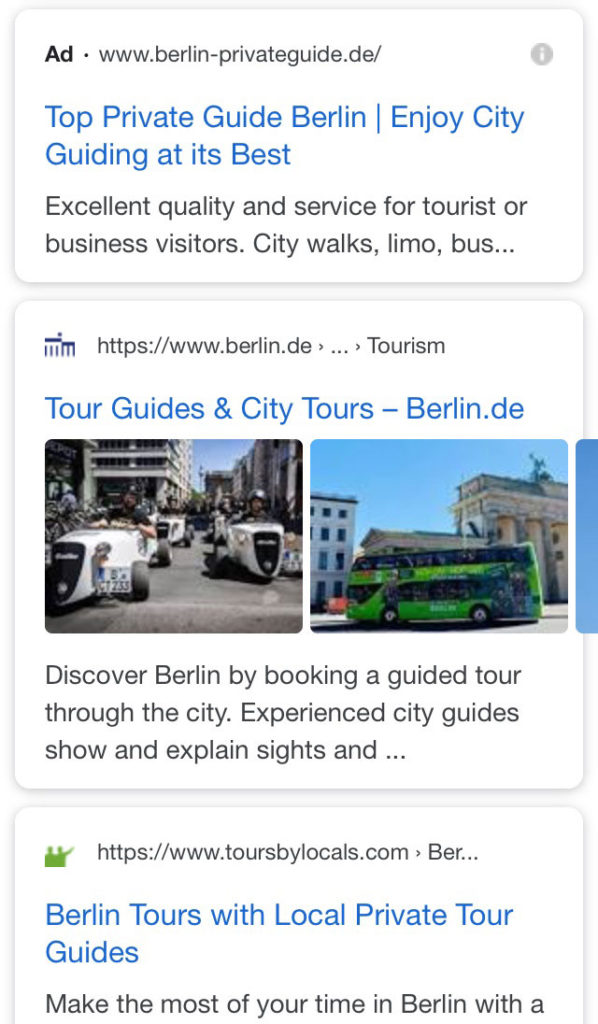
They now appear with their logos and name in top billing. This is good for sites with proper branding who are known to their audience. They will likely receive more clicks due to their popularity.
At the same time, as you can see above, Google ads also got their own logo instead of the small green Ad box. This makes them fit in with the rest of the design and less obvious as advertisement, don’t you think?
The Big Question: Why is Google Doing This?
Of course, this development doesn’t stop with the above changes. In the future, you can expect to see even more of them. But why is Google doing this in the first place?
Well, in general, you can assume that the changes are informed by solid data and rigorous testing. They are taking steps to improve the user experience and deliver the best results to encourage searchers to keep using their product.
However, you also need to be aware that, in the end, they want to make money. So, as already mentioned, many of the changes aim to keep users on their own pages so they might click on ads, for which the big G gets paid.
While we, as people who rely on the search engine for organic traffic, might not like that one bit, users apparently do. Consequently, that’s what we have to work with. Let’s talk about how to make the most of it now.
What Do Google’s Layout Changes Mean for the Future of Search Engine Optimization?
With all the changes coming to Google, how can we, as website owners as well as SEO specialists and amateurs, make sure our organic traffic doesn’t suffer? This is what the final section is about.
1. Rethink Your Keywords
When doing keyword research, from now on it makes sense to not only look at the organic competition but also what else you are up against.
Since PPC listings push down organic results, you might be able to attract more clicks where there are fewer ads and other layout elements. Not to mention, pages that provide more organic results, to begin with.
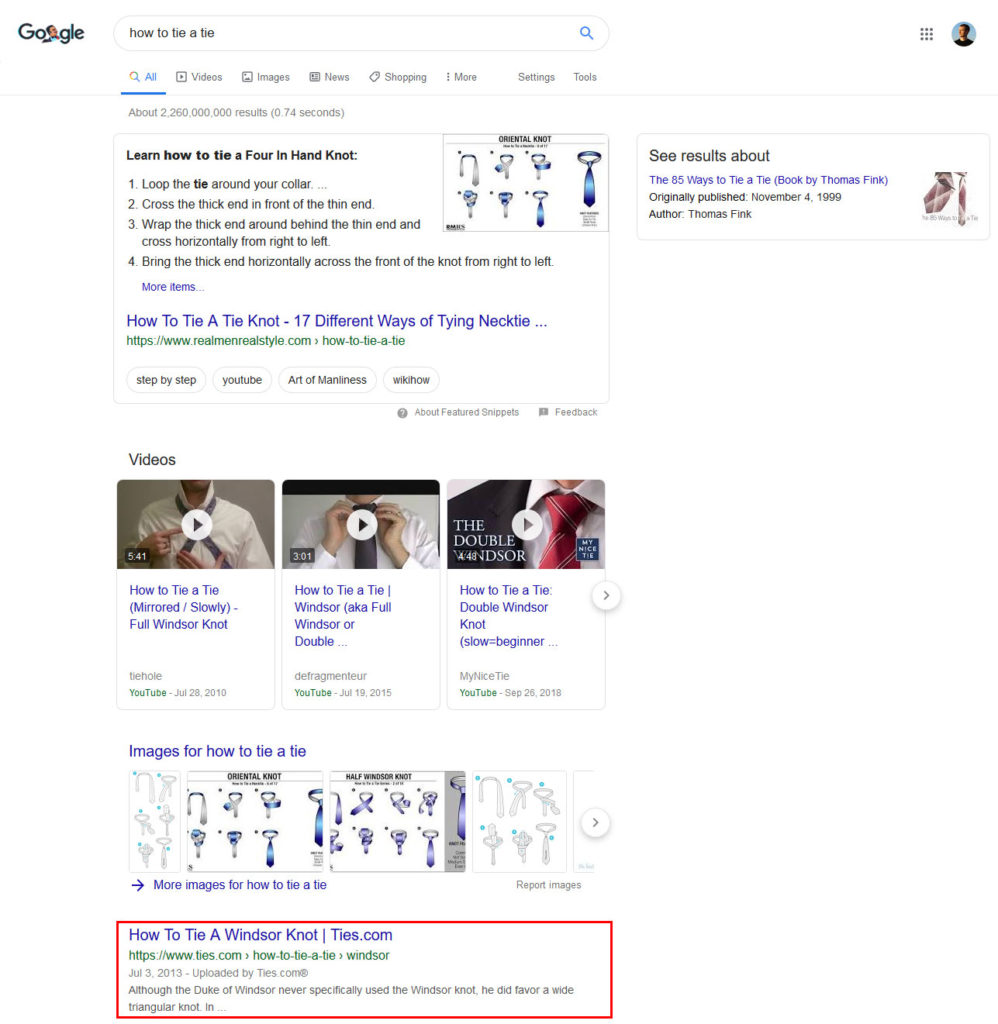
For that reason, when picking your keywords, be sure to google them first and see what ends up on the page. In some cases, it might make sense to target something less crowded and with higher visibility.
2. Improve Your Existing Posts
Aside from checking keywords for new content it also makes sense to look at your existing posts.
For example, if you track your rankings via a tool like Google Search Console and have a lot of content ranking higher than #7, be sure to check manually if that moves you to the second page for that query. If so, it’s time to step up your off-page SEO game to try and move your entries back on the front page.
In addition, if you find yourself crowded out by other layout elements, it can be a good idea to look at your overall content strategy. That means, if you find one of your articles outranked by image or video results, you can counteract that by including your own visuals in the post in question. This might get you a space further up in the SERPs.
By the way, if you like these tips, be sure to check out our post on how to increase traffic without new content.
3. Optimize for Voice Search
Voice search is playing a bigger and bigger role as people increasingly use voice assistants to search for stuff.
On the one hand, that is a problem, because many of the assistants will read answers from featured snippets directly. On the other, they also read out the name of the site that the snippet is coming from. Consequently, voice queries can still bring you visitors or at least increase your branding.
In addition, on non-voice searches, being the featured snippet puts you on the coveted position zero. For that, and other reasons, you should learn how to optimize your site for voice search.
Also, be aware that featured snippets usually come from pages already ranked on the first page of Google. Therefore, positioning yourself among those chosen few still need to be part of your SEO efforts.
4. Take Advantage of Rich Snippets/Schema Markup
We have talked about Schema.org markup and rich snippets before. They allow you to add more information to your search results.
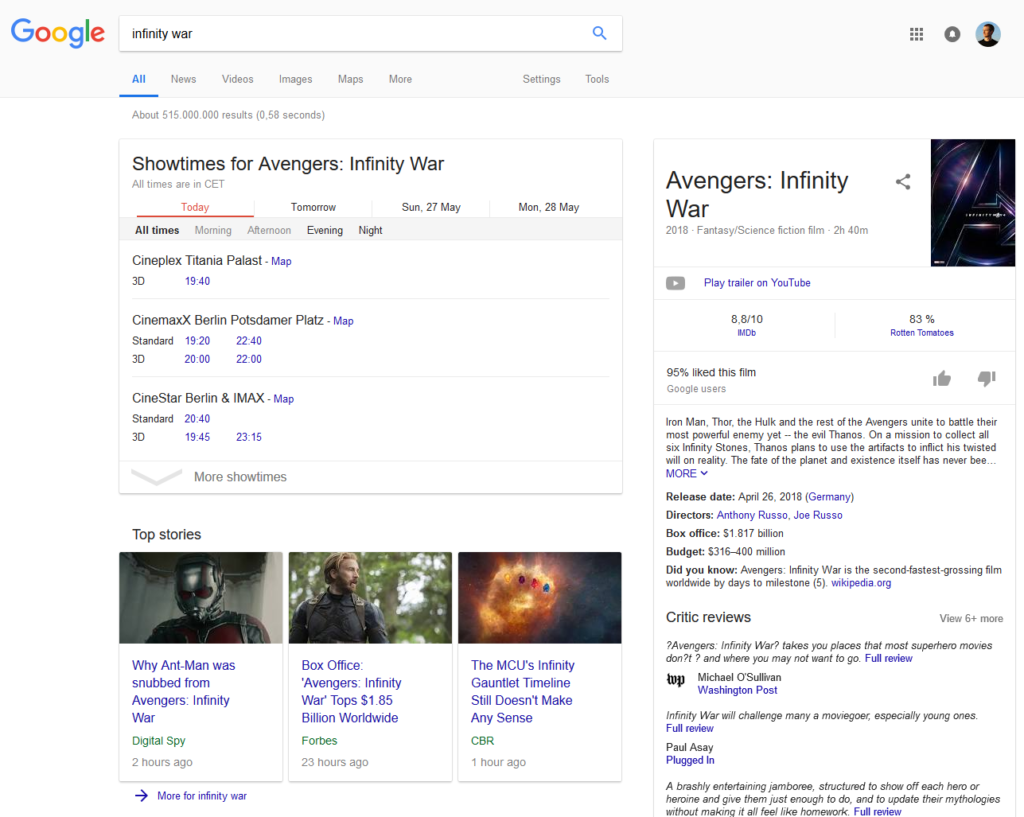
Doing so is good for click-through rates and setting yourself apart in the SERPs. This is not the worst idea since organic results are getting the short end of the stick as of late.
Also, using structured data makes it more likely your information will appear in other places of the SERPs like the knowledge graph. In short, it is worth implementing to look more prominent in what little real estate is left to you.
5. Don’t Fear the Ads
Yes, Google is making efforts to get people to click ads. Yes, that is potentially detracting them from clicking on your organic results (although they are clearly better!).
However, studies show that people are actually quite good at filtering out advertisements. Just like stock photos, they ignore them habitually after a while (you can find more interesting facts like that here).
So, keep on shooting for that high rank in Google because people still click on it. For that, make sure your classic SEO efforts are on fleek.
6. Focus Your Local Efforts on the 3-Pack
With the layout changes pushing down the 3-pack listings (the three entries that appear under the map view when looking for local businesses), organic results are especially far down on these pages.
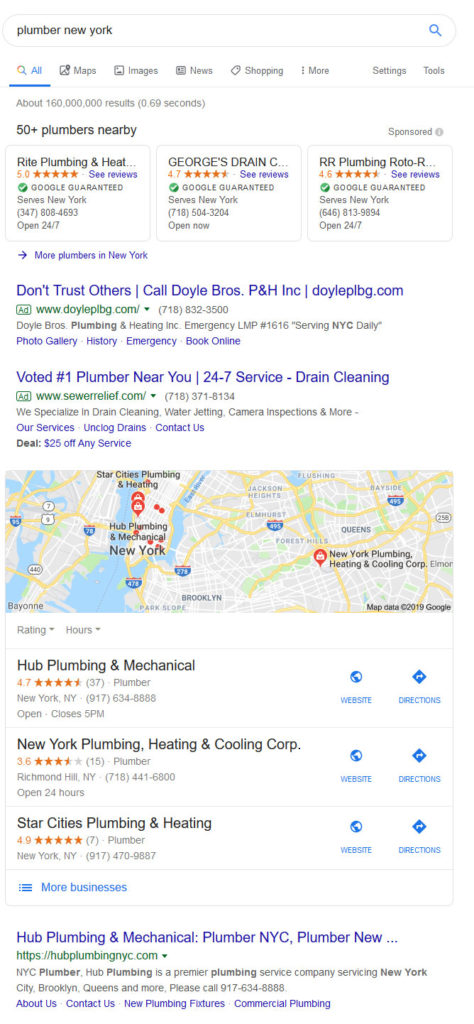
For that reason, as a local business trying to rank for competitive queries like that, your main focus should be to get into the pack. One of the best ways to do that is to optimize your Google My Business listing.
7. Branch Out to Other Channels
With all the effort that Google is making to get people to click on their ads, you should not forget that SEO is only one traffic channel.
Sure, it is a big one for many but not the only way to get people on your site. Here are some others:
- Social media — This includes platforms like Quora and Reddit, which act like alternative search engines for many.
- Email marketing — Having a full subscriber list is always a good idea because it makes you independent of channels that you don’t control.
- Guest post — Writing for other websites will make you more visible. While guest posting doesn’t necessarily net SEO benefits (though, with a backlink, it might do that, too), writing blog posts on other sites can still bring in traffic and is good for branding.
- Paid marketing — If you have the budget, using paid ads can also be a valid addition to your traffic channel mix.
In addition to the above, your focus should be on retention. For those people you get on your site, make sure to treat them well. You can do so by increasing trust, reducing your bounce rate, and working on dwell time.
In addition, if you are creating other content such as videos or apps, make sure that those rank well on their prospective platforms. Since they are usually used to bring people back to your main web presence, the higher the position on their own platform, the better the chances they will bring in visitors.
In Conclusion
Google is constantly changing and with it the field of SEO. As you can see from the above, these include design changes aimed at keeping people on the SERPs and click on PPC ads. As a consequence, it is getting harder to acquire organic traffic.
However, at the same time, if you roll with the punches, this doesn’t mean your site has to suffer. By keeping up to date on layout and algorithm changes, you can keep yourself well-positioned in the search results. The above tips above will help you do so.
How do you feel about the changes Google is making? Did you notice significant differences in your traffic? Let us know in the comments section below!

1 Comment